Discover Our Treatments:
Bone grafting plays a crucial role in restoring the integrity of the jawbone, ensuring successful outcomes for various dental treatments. A patient might require a bone graft to provide additional bone tissue for dental implants, to preserve or restore bone after tooth loss, or to correct bone defects or irregularities in the jaw, among other reasons.

In the context of oral surgery, bone grafting is a surgical procedure that involves adding bone or bone-like material to the jaw to stimulate new bone growth. It is commonly used as a preparatory step for dental implant placement.
When a tooth is lost or extracted, the bone that once supported the tooth can begin to deteriorate over time. Bone grafting helps address this issue by providing a stable foundation for dental implants or other restorative procedures.
The bone grafting material can come from various sources, including a bone bank (donor bone), the patient’s own bone, or synthetic materials. During your consultation, your oral surgeon will thoroughly discuss your choices, including your anesthesia options.
At Crescent Oral Surgery, we offer different types of bone grafting procedures to suit your personalized needs. Depending on where the new bone is needed, the extent of your bone loss, your facial anatomy, as well as other relevant factors, we may recommend one of the following procedures:
The socket preservation procedure, also known as alveolar ridge preservation, is a procedure performed after tooth extraction to preserve the shape and volume of the socket (the area where the tooth was located). When a tooth is extracted, the surrounding bone can resorb or shrink, affecting the area’s aesthetics and function and complicating future dental implant placement.
During the Socket Preservation Procedure:
It is a relatively simple and minimally invasive procedure, typically performed with local anesthesia or intravenous sedation. The healing time is relatively short, and patients can usually resume normal daily activities shortly after the procedure.
A sinus lift procedure is a surgical technique that increases the amount of bone in the upper jaw’s posterior region. The general purpose of the procedure is to create a sufficient bone volume in the area where dental implants are to be placed.
The maxillary sinuses are located behind the cheeks and on top of the upper teeth. When upper teeth are missing or extracted, the surrounding bone tends to resorb, and the maxillary sinus may expand, leaving insufficient bone height for implant placement.
During the sinus lift procedure:
The surgery is typically performed under local anesthesia or intravenous sedation, and post-operative healing may take several months before dental implants can be placed securely in the newly augmented bone.
Ridge augmentation, often performed using guided bone regeneration (GBR), is a procedure aimed at increasing the width and/or height of the jaw ridge. The jaw ridge, also known as the alveolar ridge, may resorb or become thin, making it unsuitable for conventional dental implants.
During the ridge augmentation procedure:
This procedure is typically performed under local anesthesia or intravenous sedation. Once the new bone has matured and integrated with the existing bone, dental implants can be placed to restore missing teeth and improve oral function and aesthetics.
Nerve repositioning, also known as inferior alveolar nerve repositioning, is a surgical procedure performed to make space for dental implants in the lower jaw. The procedure is necessary when the inferior alveolar nerve, which provides sensation to the lower lip and chin, interferes with the placement of dental implants.
When there are missing teeth in the area of the two back molars and/or the second premolar in the lower jaw, the inferior alveolar nerve may be in the way of ideal dental implant positioning. In such cases, nerve repositioning becomes a viable option to create sufficient room for the implants without damaging or injuring the nerve.
During the nerve repositioning procedure:
Nerve repositioning is considered a more aggressive surgical approach because it involves manipulation of the nerve bundle. As a result, there is a possibility of postoperative numbness of the lower lip and jaw area, which may dissipate slowly or, in some cases, not completely resolve. Therefore, nerve repositioning is generally reserved for cases where other, less invasive options are not feasible, and the patient is fully informed about the potential risks and benefits of the procedure.
After the bone graft procedure, you will be provided a set of aftercare instructions that promote optimal healing and recovery. These instructions will cover dietary guidelines, restrictions on strenuous exercise, methods to maintain cleanliness and dryness around the graft area, and other useful information.
Your dental bone graft is made up of many particles. You may find some small granules in your mouth for the first several days. It’s normal to have some of them come out of the graft site and into your mouth. There are some things you could do to minimize the number of particles that become dislodged:
DO NOT UNDER ANY CIRCUMSTANCES BLOW YOUR NOSE FOR THE NEXT FOUR (4) WEEKS.
Decongestants such as Drixoral, Dimetapp, or Sudafed will help reduce pressure in the sinuses. You may also be given a prescription for antibiotics. Please take these as directed.
Keeping your mouth clean after surgery is essential to reduce the risk of infection.
Do not brush the teeth in the area of surgery for 48 hours.
We may prescribe an antibiotic rinse (Chlorhexidine, Periogard, Peridex) for certain dental treatments.
We want your recovery to be as smooth and as pleasant as possible. Following these instructions will assist you, but please call us if you have questions about your progress. Please try to call during office hours; however, a 24-hour answering service is available for after-hours contact with a doctor.
Our highly skilled oral surgeons are dedicated to providing personalized and compassionate care, ensuring optimal results for every patient. Discover how our advanced treatments can enhance your oral health and overall well-being.

Sripriya Jayaraman, DDS, MPH
Sripriya “Priya” Jayaraman has a DDS degree from the University of California in San Francisco, along with a MPH from Wichita State University. She also finished a two year advanced education program in Orofacial Pain and Dental Sleep Medicine from the University of Kentucky in Lexington, KY. She is a diplomate of American Board of Orofacial Pain and American Board of Dental Sleep Medicine. Her principle areas of interest include TMJ disorders, obstructive sleep apnea, primary headaches, neuropathic pain and restorative dentistry. She is well versed in the fabrication of TMJ orthotics, trigger point injections including Botox, fabrication of oral appliance (mandibular advancement device) for obstructive sleep apnea and nerve blocks. In her spare time she enjoys drawing and painting.
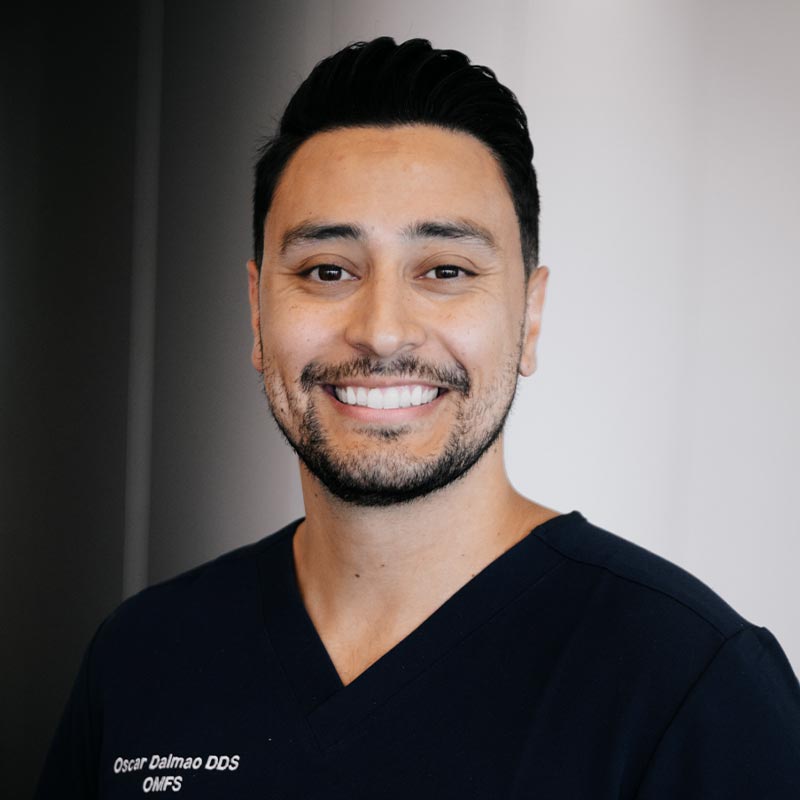
Dr. Oscar Dalmao, DDS, MSc, FRCD(C)
Toronto born and raised, Dr. Oscar Dalmao received his Bachelor of Science in Kinesiology and then went on to obtain his dental degree from the University of Toronto. After a one-year internship at Sunnybrook hospital, he continued his education and completed his specialized training in Oral and Maxillofacial surgery.
Dr. Dalmao currently provides the full scope of Oral and Maxillofacial Surgery. He has special interest in the areas of dental implants and bone grafting, graftless solutions in implant dentistry, dentoalveolar surgery, orthognathic surgery and reconstructive surgery.
When Dr. Dalmao isn’t at the office he is usually enjoying time with his family and friends or trying to find his next destination, as he is an avid traveller.
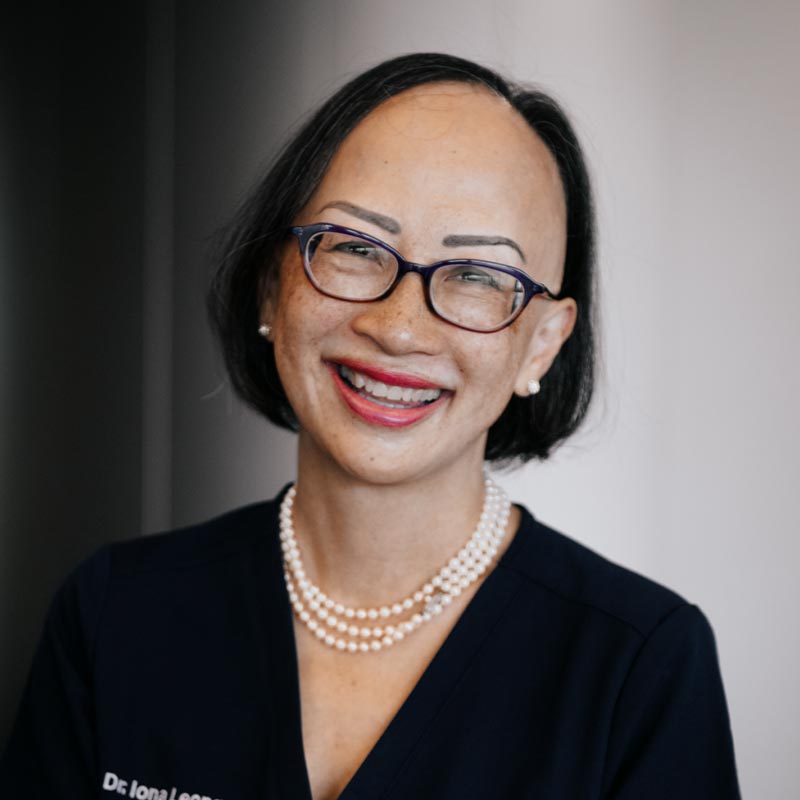
Dr. Iona Leong, Oral Pathologist, BDS, MSc, FRCD(C)
Dr. Leong is an oral pathologist and assistant professor at the Faculty of Dentistry, University of Toronto. In addition to undergraduate and graduate teaching, she maintains a private practice limited to clinical oral pathology and oral medicine in the Department of Dentistry, Mount Sinai Hospital, where she is head of the Division of Oral Pathology and Oral Medicine.
She is also an associate staff pathologist in the Department of Pathology and Laboratory Medicine, Mount Sinai Hospital and the Department of Pathobiology and Laboratory Medicine, University of Toronto.
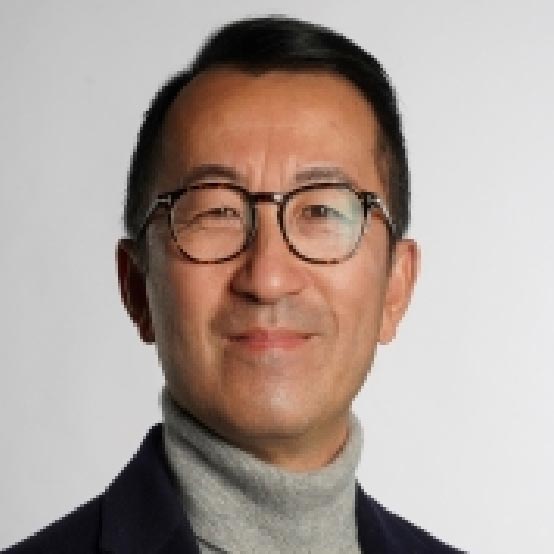
Dr. Ernie Lam, Oral Radiologist, DMD, MSc, PhD, FRCD(C)
Dr. Ernie Lam holds Doctor of Dental Medicine and Master of Science degrees from the University of British Columbia as well as clinical specialty training in Oral and Maxillofacial Radiology and a Ph.D. degree in Radiation Biology from the University of Iowa. He is also a tenured Full Professor in the University of Toronto Faculty of Dentistry.
Dr. Lam balances work, teaching, and research while also enjoying trips to the Canadian Opera Company, cooking, crafting cocktails at home, and traveling.

Dr. Riva Black, Oral Pathologist, DDS, MSc, FRCD(C)
Dr. Riva Black graduated from the University of Toronto, Faculty of Dentistry in 1998. She completed a general practice residency in Rochester, New York and then entered a combined graduate specialty program where she ultimately received a Masters and Fellowship in Oral Pathology and Oral Medicine.
In addition to Dr. Black’s clinical practice, she is a proud member of the department of Oral Medicine at the Faculty of Dentistry. She also teaches undergraduate and graduate students in the departments of Oral Pathology and Histology. Dr. Black is also involved with the Royal College of Dentists of Canada, and lectures to various general practice and specialty groups in the area of Oral Pathology.
When not working, Dr. Black can be found spending time with her husband Shane and 4 children.

Dr. Caminiti is originally from Montreal and went to McGill University for Undergraduate studies in Anatomy and then completed his dental studies in 1991. He was in the Canadian Armed Forces from 1987-1994 with service with the United Nations in 1993. He came to Toronto for his residency in Oral and Maxillofacial Surgery. After residency he was a Surgical Education Fellow in the division of Surgery at the University of Toronto. He continued as the Walter Lorenz Fellow in Orthognathic Surgery in the Division of OMFS at the Toronto General Hospital.
Marco currently is:
• Assistant Professor, Head and Program Director of Oral and Maxillofacial Surgery at the University of Toronto;
• Head of OMFS at Humber River Hospital
• Surgical Staff at the Cleft Lip Palate Program at Holland Bloorview Kids Rehabilitation Hospital.
Dr. Caminiti’s practice and research is focused on surgical orthodontic virtual planning for the management of patients with facial deformities and the development and assessment of surgical skills.
He associates his private practice with Crescent Oral Surgery and is proud and honored to be part of a wonderful group of people and a superb team that focusses on great patient care.

Dr. Kris Lee, BSc, DDS, MD, FRCD(C)
For Dr. Kristopher Lee, a Bachelor of Science in 1999 from the University of Toronto led to a Dental Degree from the same institution in 2003. After that, he completed a year of Periodontics training at the University of Pittsburgh and a Medical Degree and Oral & Maxillofacial Surgery Certificate at the University of Michigan.
Dr. Lee’s training at the University of Michigan focused on facial trauma, head and neck oncology/reconstruction, cleft lip and palate surgery, orthognatic surgery, dentoalveolar surgery and dental implant surgical treatment with associated alveolar reconstruction.
When he’s not working on his patients, he’s working on his tennis game and tries to play several times a week. As a father of 2 young children (and the early mornings that entails), he’s also developed a passion for great coffee.
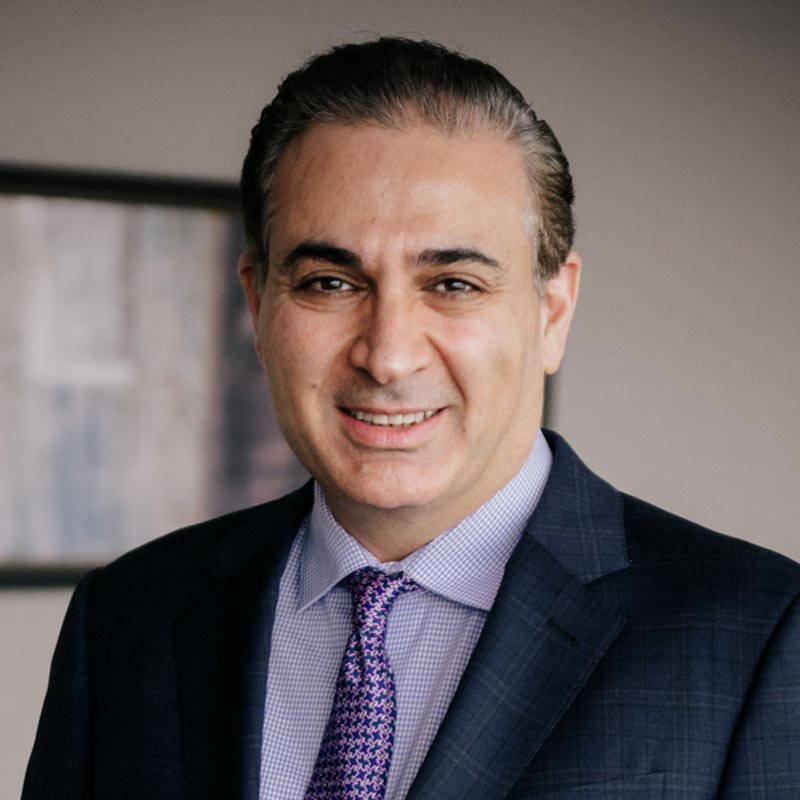
Dr. Amir Mousavifar, DMD, FRCD(C)
Dr. Amir Mousavifar has attended both medical and dental faculties at McGill University, where he obtained his DMD degree in 2004. After that, he completed his General Practice Residency at the Carolinas Medical Centre and an oral surgery fellowship in New York at the Mount Sinai Medical Centre in Manhattan, the Elmhurst Hospital Centre in Queens and the VA Medical Centre in the Bronx.
Dr. Mousavifar then completed his Oral and Maxillofacial Surgery training with one year of general surgery at McGill University Health Center, with extensive training in anaesthesia, reconstruction, dentofacial deformity, corrective jaw surgery, facial trauma and complex implant surgical procedures.
He is an active Oral and Maxillofacial Surgeon staff at the state-of-the-art Humber River Hospital in Toronto. He also works as part-time faculty at the University of Toronto and is a fellow in Oral and Maxillofacial Surgery of the Royal College of Dentists in Canada.
A Crescent team member since 2010, Dr. Mousavifar practices across the full range of surgeries at all three locations. He has special interest in applying digital and cone beam CT scan technology for guided complex dental implant and corrective jaw surgeries.
Dr. Mousavifar is a member of Dentsply Sirona’s coveted implant PEERS network-a platform for the exchange of clinical experience, research and science between dental implant manufacturers and key clinical leaders in implantology across the globe.
Dr. Mousavifar has an Advanced Cardiac Life Support certificate, teaches CPR and management of medical emergencies to numerous dental offices and speaks multiple languages. He has been involved in many charities including Operation Smile and UNICEF. He has worked in underprivileged communities in Montreal, Northern Quebec and the Northwest Territories. He has also judged a beauty pageant. The best smile won.
When not adding to his list of achievements, Dr. Mousavifar spends time with his family and enjoys swimming, biking, basketball, soccer and skiing.
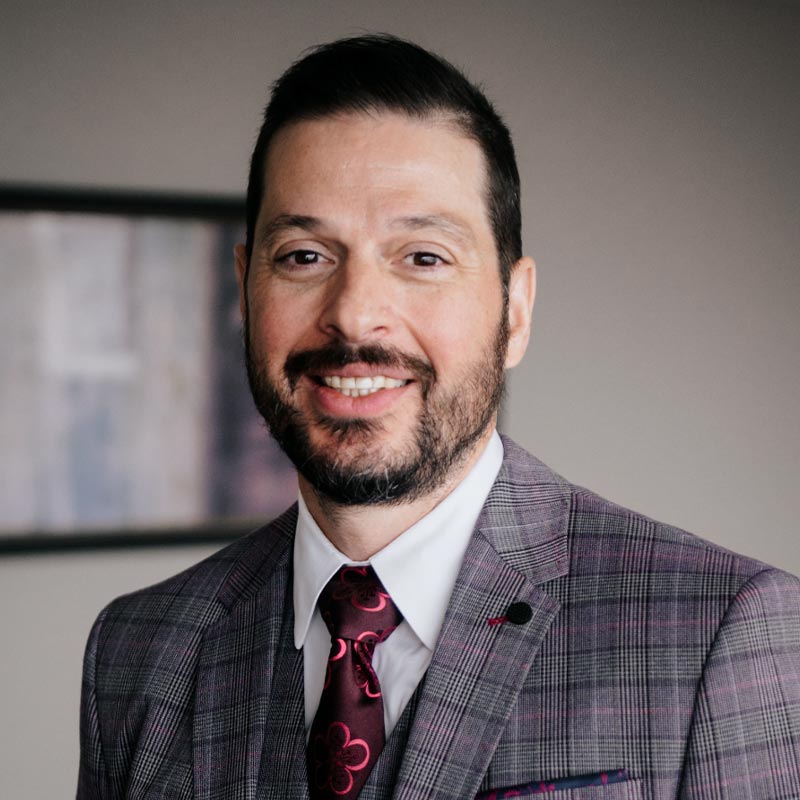
Dr. Peter Gioulos, BSc, DDS, MSc, FRCD(C)
The son of Greek immigrants and a Torontonian from birth, Dr. Peter Gioulos received his Bachelor of Science from the University of Western Ontario. He received his Doctor of Dental Surgery training from the University of Toronto. An externship in Oral & Maxillofacial Surgery at Baylor University in Texas soon followed, as did a one-year hospital General Dental Residency at Mount Sinai Hospital in Toronto. He completed his specialty training in Oral & Maxillofacial Surgery at the University of Toronto.
Peter now practices the full scope of his specialty including wisdom teeth & dental extractions, reconstruction & grafting, dental implant placement, pathology, and orthognathic surgery. He has had extensive experience and training in full arch dental implant placement including “All-on-4” treatment as well as placement of specialized “zygomatic” and “pterygoid” implants.
He is an active member of the Canadian Dental Association, the Ontario Dental Association, ITI, and the Asclepius Dental Society. He has hospital appointments at the Holland Bloorview Kids Rehabilitation Hospital and Scarborough Health Network Centenary Hospital
Peter spends as much time outside of work as he can with his big fat Greek family and his lovely wife and three kids – you’ll find them skiing in Ontario Cottage Country or, as often as they can manage it, skiing in the Rockies.
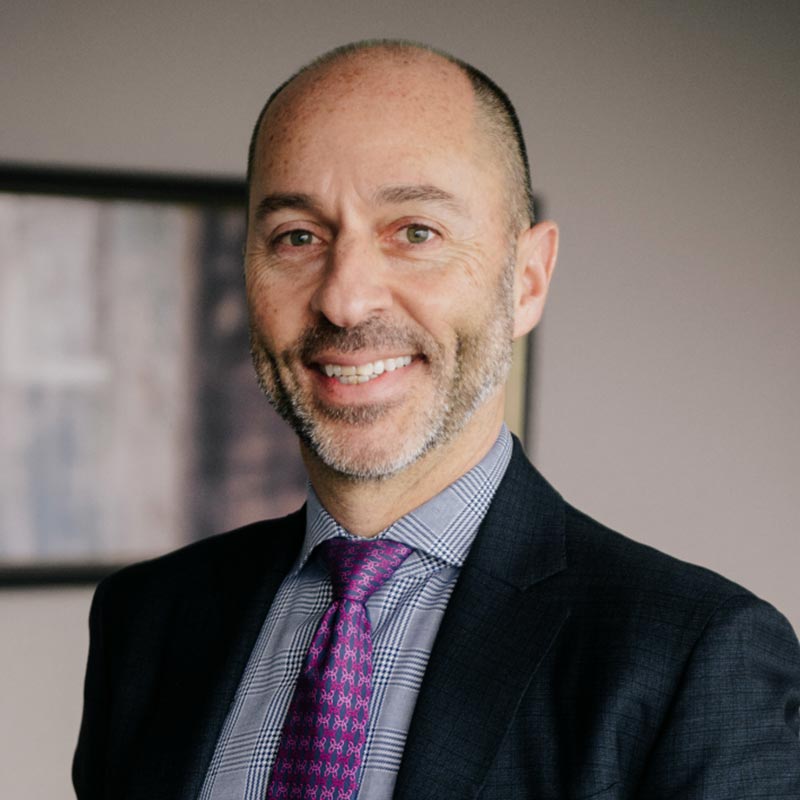
Dr. Brian Rittenberg, BSc, DDS, FRCD(C)
A Toronto native, Dr. Brian Rittenberg graduated from the University of Western Ontario in 1992 with a Bachelor Degree in Psychology. He then completed his Dental Degree, specialized training in Oral and Maxillofacial Surgery and a Masters in Bone Biology at the University of Toronto and Toronto General Hospital in 2003.
Since starting his practice, Dr. Rittenberg enjoys teaching dental interns and residents at Mount Sinai Hospital, where he has also cultivated an interest in the surgical management of Temporomandibular Joint (TMJ) Disorders. He is also an attending surgeon in the Regional Treatment Centre for Temporomandibular Joint Reconstruction there.
In addition to having a special interest in the surgical management of TMJ disorders, Brian enjoys practicing all facets of Oral and Maxillofacial Surgery, including the removal of wisdom teeth, the placement of dental implants, the evaluation and surgical treatment of pathology (diseases of the mouth) and corrective jaw surgery.
Dr. Rittenberg has also served as a line officer and ultimately president of the Ontario Society of Oral and Maxillofacial Surgeons, is involved with the Royal College of Dentists of Canada (the national licensing body for all dental specialists) and is a fellow of the ITI – International Team for Implantology.
Outside of teaching and work, Dr. Rittenberg is a runner, hockey player, traveller, enjoyer of good wine and food and, above all, thankful for the time he gets to spend with his wife Lindsay and his daughters Joey and Ruby, up on beautiful Lake of Bays.

Dr. Eddie Reinish, BSc, DDS, FRCD(C)
Dr. Eddie Reinish has been an Oral and Maxillofacial Surgeon since 1997. He completed his training at the University of Michigan. Prior to his surgical training, Eddie completed his undergraduate degree in Physiology and Doctorate in Dental Surgery at McGill University.
Dr. Reinish is currently on staff at Rouge Valley Hospital, Humber River Regional Hospital and Mount Sinai Hospital. He is a fellow of the Royal College of Dentists of Canada and The American Board of Oral and Maxillofacial Surgeons. He is also an examiner for the Royal College of Dentists of Canada in Oral and Maxillofacial Surgery.
Dr. Reinish founded Crescent Oral Surgery in 2002 along with his partner, Dr. Marco Caminiti. An empathetic and compassionate surgeon, Dr. Reinish understands the typical anxieties that accompany a visit to the oral surgeon’s office, and his caring, kind manner consistently puts patients at ease. Dr. Reinish’s practice focuses on dental implants and bone grafting, corrective jaw surgery and removal of wisdom teeth and other minor oral surgical procedures.
Outside the clinic, Dr. Reinish can be found enjoying time with his wife and 3 children or, as an avid cyclist, on one of his several bicycles both here at home and abroad (yes, he travels with them). He is also a downhill skier and loves good wine and food.